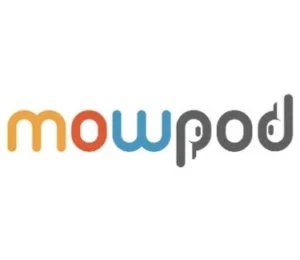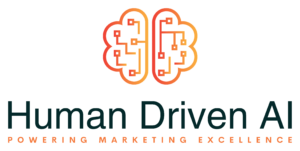The Next Marketing Revolution Is Right In Front of Us
Mathew Sweezey
Salesforce

- Part 1 The Next Marketing Revolution Is Right In Front of Us
- Part 2Is Salesforce the center of the marketing universe? — Mathew Sweezey // Salesforce
Show Notes
Quotes
-
“I really own a POV in the future ofmarketing of the organization so I help look at research both internal and external and help bring insights to both our customers and our brand as to what the future of marketing looks like.” -Mathew“Because I am on a market strategy, I don’t sit on a cloud. My insights are spent on the organization as a whole so I am not cloud-specific or product-specific as you might think.” -Mathew“The way I look at it is imposed on the day of June 24, 2009. Anything before that day is the Limited Media era. We need to understand that marketing is not the truth. Marketing is a game that we play, dictated by the environments that we find ourselves in.” -Mathew“Think about the environment created by three specific things creation, distribution, and consumption. Before that date, we live in a limited media environment which means that content was limited and who could create it, how we distribute it, and how much is accessible in the environment.” -Mathew“Where we are now is the Infinite Media era. One of the bigdifferences between these two is who does the environment operates for and what core games do we play. Before that day, there was a barrier to the creation and distribution. The only way to overcome that barrier was a thing called capital. The only peoplewho had a lot of capital and create a lot of noise were brands. They have a monopoly on the media environment.” -Mathew“On the Infinite Media era, the largest creators of noise are individuals. The second-largest is our personal connected devices and we often don’t think about this.” -Mathew“June 24, 2009, is the specific date based on math that individuals became the large creators of noise.” -Mathew“One of the goals of marketing is two-fold. One is to break through the noise and two is to get people into action. For us to do that, we have to be very clear on the environment that we are operating in. What we used to break through was a plethora of noise created by other brands which means that the games we played were their specific type of game.” -Mathew “In a world of limited information, people rely on and make decisions in different ways. We all know the logic of top of mind. This idea and gamewere played during the Mad Men era where the goal was, we need to be top of mind.” -MathewIn the Infinite Media era, there’s an infinite amount of content that is infinitely and instantly accessible. So rather than human remembering things, and then using that to make determinations, we offload that to our digital devices hence turning never ever would have been considered purchases into highly considered purchases simply because they can be.” -Mathew“I understand the idea that the media landscape has changed hence there is an infinite amount of content and I understand that the way businesses are undergoing digital transformation is also different. A key component to that is the idea of either marketing automation or just understanding where someone is and the purchase flow and being able to create and distribute what is the dynamic content.” -Ben “The reality is, the number one key trait between a high-performer and an underperformer is executive buy-in to a new idea of marketing. As boring as that sounds, it means the key executive understands that the role of marketing is no longer about creating messages to pump in the marketplace. It’s about creating a consumer’s connected experiences across the entire customer journey. That’s it. They moved from messages to the journey.” -Mathew“First off, the experience is what you are going to be focused on not just marketing clutter. This is the reverse. How do we focus on what the experience that the person is looking for at that moment and then how do we create a contextual experience inside of that.” -Mathew“The contextual experience is five key part. It’s available, permissioned, personal, authentic, and purposeful. Available is obvious if it’s not there, there’s nothing to be engaged with. Permissioned is needed for two things, direct access and data. Personal, a lot of times we think of how personalized can we make something. It’s not personalization of something, it is how personal can we deliver it.” -Mathew“The last two are soft skills. Is itauthentic? Is it the same tone and consistent with the channel and finally, is it purposeful. Is it focused on something past the product and that’s a really hard one for marketers to understand.” -Mathew“The reality is, it’s a long customer life cycle. Product usage is only a very small period of time and if we want to have a greater share with that person’s life, we have to be able to talk about things past the product usage.” -Mathew“The revolution is happening. It’s here. The brands that are succeeding or high-performers, they are operating from different ground. They are giving marketing a different role, scope, and function.” -Mathew“As we think about digital transformation, this is marketing transformation. We are moving from product-centricity to customer-centricity. It is moving out of a siloed department to become decentralized across the entire organization. It’s moving from how we grow businesses to guiding them across the life cycle of journeys and experiences.” -Mathew“Once again, in the Infinite era, the environment operates for the individuals. Find ways to either co-create your experiences or find ways to work with it.” -Mathew“People that understand it’s a journey, have one mapped the journey out and they focus on creating experiences that meet people in those moments and then guide them to the next steps in the journey. By guiding from step to step, they’re creating not only a holistic, repeatable process but also able to contextually meet with people in those moments. So we seem to talk to people more.” -Mathew“I have done some research and I asked 400 B2B buyers, ‘Have you ever been disappointed with the content that you have downloaded from a brand?’ 71% of them said yes. The most surprising part, 25% of those said they would never engage with that brand ever again. That was the level of disappointment.” -Mathew“The thing is, they feel they never have to engage with you again because of the opportunity cost. In their mind, ‘there is an infinite amount of content and they don’t need you to find the answers they want.” -Mathew“Put reviews in place. Actually talk to the costumers. If you have an experience, review that experience and then make sure that you are asking three specific questions. Number one, where were you in the journey when you came across this experience? Number two, did it meet your expectation? And number three, have you seen better?” -Mathew
- Part 1 The Next Marketing Revolution Is Right In Front of Us
- Part 2Is Salesforce the center of the marketing universe? — Mathew Sweezey // Salesforce
Up Next:
-
Part 1The Next Marketing Revolution Is Right In Front of Us
Today we're going to discuss if the future of marketing is already here. Joining us is Mathew Sweezey, who is the Director of Market Strategy at Salesforce, which is the world's most recognized customer success platform. In part 1 of our conversation, we are going to discuss if the marketing revolution is right in front of us.
-
Part 2Is Salesforce the center of the marketing universe? — Mathew Sweezey // Salesforce
Today we're going to discuss if the future of marketing is already here. Joining us is Mathew Sweezey, who is the Director of Market Strategy at Salesforce, which is the world's most recognized customer success platform. In part 2 of our conversation, we discuss whether Salesforce and some other big companies are in the center of the marketing universe.
Play Podcast










